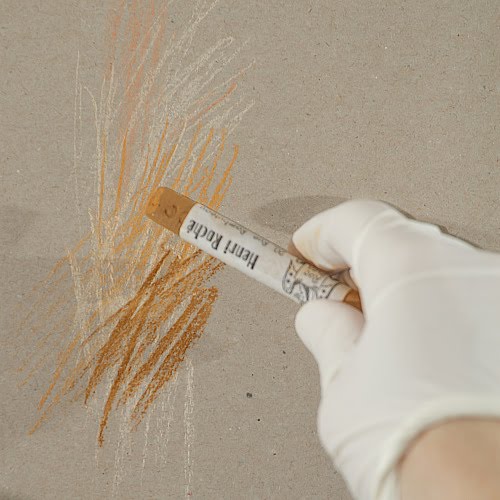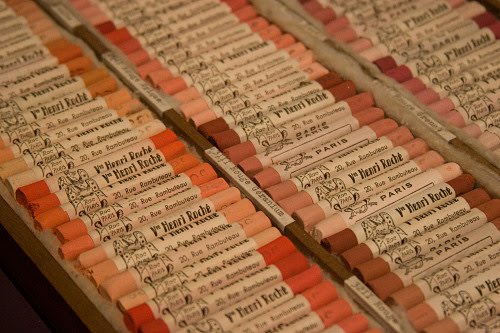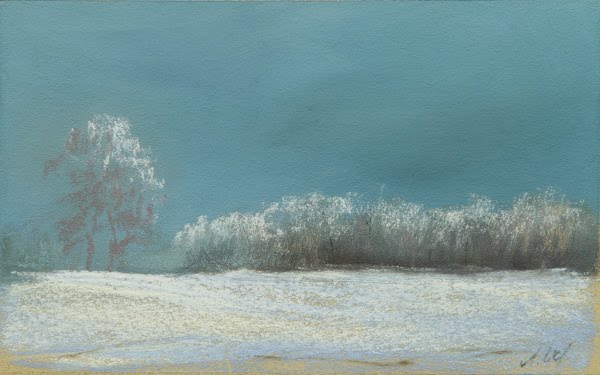Henri Roché Pastels
 2010 © Astrid Volquardsen
2010 © Astrid VolquardsenIt is funny how a small wooden box can get you all excited. My heart jumped at this sight. The box contains some Roché pastels!
 2010 © Astrid Volquardsen
2010 © Astrid Volquardsen
I was surprised how long and quite hard they turned out to be. If you compare them to the hardness of other pastels, I would put them somewhere between Girault and Unison.
Because they are so long, you can hold them at the end and move them easily from top to bottom. It’s obvious why Degas was able to leave with the Roché Pastels the kind of marks one can recognize in his paintings and sketches. Anyway it is a mystery to me how it was possible for him, that the pastel layers stayed on the wrapping paper he used.
Even though the pastels are quite hard, they are too soft to hold many layers on the paper. Clearly one of the reasons why Degas experimented with different types of fixativs and steam.
Unfortunately he kept this secret to himself.
>The cost of one stick with 14 Euros is quite expensive, which probably can be put down to the manufactoring process. (you can watch a film about this here). The pigments quality seems to be very good, but if they are superior to other excellent pastel brands, I doubt. Those who want high quality won’t do anything wrong with the Roché pastels and they certainly do expand the possibilities of further pastel techniques.
 Ausschnitt aus einem Bild von Edgar Degas
Ausschnitt aus einem Bild von Edgar Degas


 Eva im Bad VI, Pastell,
Eva im Bad VI, Pastell,


 Der Traum aller Pastellmaler.
Der Traum aller Pastellmaler. Des Meisters persönliche Pastellbox.
Des Meisters persönliche Pastellbox.

